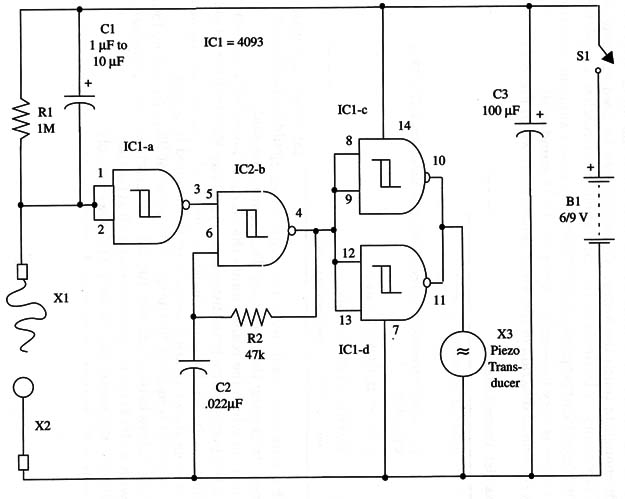A slight misjudgment or quiver of the hand, and the ring will contact the weaving wire. This turns on the circuit, which will produce an audible tone.
Audio tone duration is constant and is not dependent on contact between the wires.
The skill required to play the game depends largely on the size of the loop and the degree of twist and turn in the wire.
Scoring is a matter of counting the number of times the sound is produced by the device. The person with the lowest total wins.
The circuit is powered from a 9 V battery or four AA cells. A schematic diagram is shown in Fig. 1.

A printed circuit board can used to mount the components and housed in a small plastic box with the battery and transducer. The wires running to the loop and weaving wire can be 2 to 3 feet long.
Time on depends on Cl, which can be varied among the values in the parts list. The circuit is powered from a 9 V battery or four AA cells. Current drain is about 0.5mA with the tone off and about 5 mA with the tone on.
IC1 - 4093 CMOS integrated circuit
R1 - 1,000,000 ohm, 1/4 W, 5%
R2 - 47,000 9, 1/4 W, 5%
X1 - Weaving wire (see text)
X2 - Loop (see text)
X3 - Piezoelectric transducer or crystal earpiece, Radio Shack 273-073 or equivalent
S1 - SPST toggle or slide switch
B1 - 6 or 9 V, AA cells or battery
C1 - 1 µF to 10 µF, 12 WVDC electrolytic capacitor (see text)
C2 - 0.022 µF ceramic or metal film capacitor
C3 - 100 µF, 12 WVDC electrolytic capacitor



